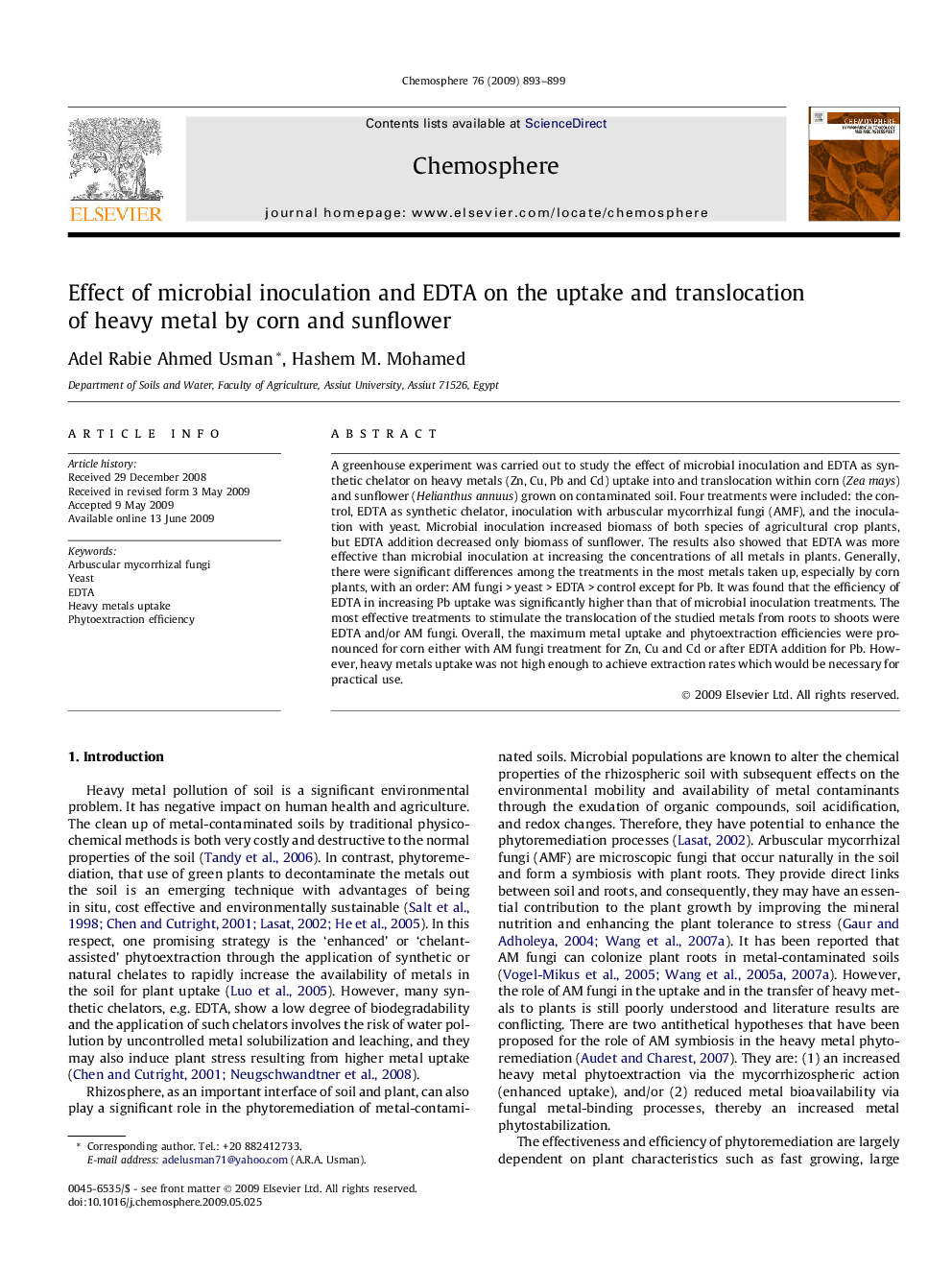| Article ID | Journal | Published Year | Pages | File Type |
|---|---|---|---|---|
| 4412698 | Chemosphere | 2009 | 7 Pages |
A greenhouse experiment was carried out to study the effect of microbial inoculation and EDTA as synthetic chelator on heavy metals (Zn, Cu, Pb and Cd) uptake into and translocation within corn (Zea mays) and sunflower (Helianthus annuus) grown on contaminated soil. Four treatments were included: the control, EDTA as synthetic chelator, inoculation with arbuscular mycorrhizal fungi (AMF), and the inoculation with yeast. Microbial inoculation increased biomass of both species of agricultural crop plants, but EDTA addition decreased only biomass of sunflower. The results also showed that EDTA was more effective than microbial inoculation at increasing the concentrations of all metals in plants. Generally, there were significant differences among the treatments in the most metals taken up, especially by corn plants, with an order: AM fungi > yeast > EDTA > control except for Pb. It was found that the efficiency of EDTA in increasing Pb uptake was significantly higher than that of microbial inoculation treatments. The most effective treatments to stimulate the translocation of the studied metals from roots to shoots were EDTA and/or AM fungi. Overall, the maximum metal uptake and phytoextraction efficiencies were pronounced for corn either with AM fungi treatment for Zn, Cu and Cd or after EDTA addition for Pb. However, heavy metals uptake was not high enough to achieve extraction rates which would be necessary for practical use.
